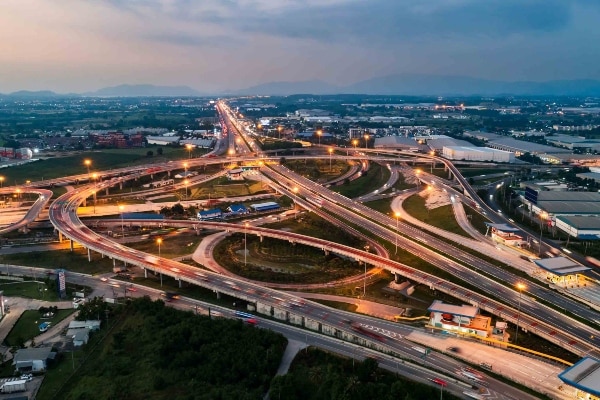-
Featured services
2026 Global AI Report: A Playbook for AI Leaders
Why AI strategy is your business strategy: The acceleration toward an AI-native state. Explore executive insights from AI leaders.
Access the playbook -
Services
Alle Services und Produkte anzeigenNutzen Sie unsere Fähigkeiten, um die Transformation Ihres Unternehmens zu beschleunigen.
-
Services
Network-Services
Beliebte Produkte
-
Services
Cloud
Beliebte Produkte
-
Services
Consulting
-
Edge as a Service
-
Services
Data und Artificial Intelligence
- KI und intelligente Lösungen
- Daten-/KI-Strategie und -Programm
- Data Engineering und Plattformen
- Daten-Governance und -management
- Datenvisualisierung und Entscheidungsfindung
- $name
- GenAI Platforms
- GenAI Industry Services
- GenAI Infrastructure Services
- GenAI Value Transformation
- Data und Artificial Intelligence
-
-
Services
Global Data Centers
-
Beliebte Produkte
-
Services
Application Services
-
Services
Sustainability Services
-
Services
Digital Workplace
-
Services
Business Process Services
-
Services
Generative AI
-
Services
Cybersecurity
-
Services
Enterprise Application Platforms
![]()
IDC MarketScape: Anbieterbewertung für Rechenzentrumsservices weltweit 2023
Wir glauben, dass Marktführer zu sein eine weitere Bestätigung unseres umfassenden Angebotes im Bereich Rechenzentren ist.
Holen Sie sich den IDC MarketScape -
-
Erkenntnisse
Einblicke und RessourcenErfahren Sie, wie die Technologie Unternehmen, die Industrie und die Gesellschaft prägt.
-
Erkenntnisse
Ausgewählte Einblicke
-
Die Zukunft des Networking
-
Using the cloud to cut costs needs the right approach
When organizations focus on transformation, a move to the cloud can deliver cost savings – but they often need expert advice to help them along their journey
-
So funktioniert Zero-Trust-Sicherheit für Ihr Unternehmen
Sorgen Sie dafür, dass Zero-Trust-Sicherheit für Ihr Unternehmen in hybriden Arbeitsumgebungen funktioniert.
-
-
Erkenntnisse
![]()
Copilot für Microsoft 365
Jeder kann mit einem leistungsstarken KI-Tool für die tägliche Arbeit intelligenter arbeiten.
Copilot noch heute entdecken -
-
Lösungen
Alle LösungenWir helfen Ihnen dabei, den Anforderungen an kontinuierliche Innovation und Transformation gerecht zu werden
Global Employee Experience Trends Report
Excel in EX mit Forschung basierend auf Interviews mit über 1.400 Entscheidungsträger:innen auf der ganzen Welt.
Besorgen Sie sich den EX-Report -
Erfahren Sie, wie wir Ihre Geschäftstransformation beschleunigen können
-
Über uns
Neueste Kundenberichte
-
Liantis
Im Laufe der Zeit hatte Liantis, ein etabliertes HR-Unternehmen in Belgien, Dateninseln und isolierte Lösungen als Teil seines Legacysystems aufgebaut.
-
Randstad
We ensured that Randstad’s migration to Genesys Cloud CX had no impact on availability, ensuring an exceptional user experience for clients and talent.
-
-
![Heineken Landing Page]()
NTT DATA und HEINEKEN
HEINEKEN revolutioniert die Mitarbeitererfahrung und die Zusammenarbeit mit einem hybriden Arbeitsplatzmodell.
Lesen Sie die Geschichte von HEINEKEN -
- Karriere
Topics in this article
AI and energy efficiency are major focus areas in the data center industry. At our Rhine-Ruhr 1 Data Center in Bonn, Germany, an NTT Global Data Centers pilot project has brought them together.
Rather than operating the data center’s cooling systems with static controls, the site now uses dynamic, AI-driven optimization through the etaONE® platform from etalytics, which develops software for smart industrial energy systems.
This has led to a remarkable reduction of nearly 20% in the cooling system’s energy consumption.
Innovative technology for data center sustainability
As one of the world’s largest data center colocation providers, we’re always exploring innovative ways of optimizing our infrastructure. Our ambitious sustainability goal is to achieve net-zero emissions across our data centers by 2030, our offices by 2035 and our value chain by 2040 — and energy efficiency is crucial to these efforts.
This commitment is shared by one of our public sector data center clients who requested and supported the rollout of this pioneering pilot project at Rhine-Ruhr 1.
A feasibility study based on historical data revealed significant potential to save energy by focusing on the primary water–glycol circuit — the liquid cooling system that uses a mixture of water and glycol to absorb heat directly from technical components.
With the etalytics software, we could go even further, combining physical observations and data-driven AI models to optimize the operation of cooling systems. This hybrid approach is achieving substantial energy savings across industries, including data centers.
How the hybrid AI system works
To improve control of the data center’s refrigeration systems, etalytics creates a digital twin that includes all relevant cooling-circuit components, such as plate heat exchangers, chillers and pumps. Trained on historical operational data, the digital twin also incorporates physical models — thermodynamic, physical and electrical factors, like the electrical consumption of a fan increasing when the air flow doubles — for added accuracy.
It simulates optimization scenarios that account for factors such as the ambient temperature, varying setpoints (target values for key control parameters in the system) and changes in the flow rate of the chilled water circuit. It can even model an entire year’s operation in five-minute intervals, offering a detailed view of how the AI-based control behaves in real-world conditions.
The etalytics software can also extrapolate beyond an original data range. For example, even if a pump had operated at 100% capacity, the system can accurately predict performance at 80% capacity. This is where the hybrid approach excels: The data-driven model delivers precision, while the physical model ensures robustness and reliability.
A collaborative approach to integration
After the offline optimization phase — designed to prevent failures or disruptions in the production environment — the next step was integrating the etalytics software into our existing data center.
Collaborating with our building management and heating, ventilation and air-conditioning (HVAC) partners, we defined clear responsibilities for all stakeholders and developed a detailed roadmap. Our partners supported the process by updating the functional descriptions of all components and adapting the data center’s chiller control software.
The server running the etalytics platform is located in the data center, so the entire AI-based optimization process is hosted on-site.
Proactive measures to protect data center infrastructure
Because the optimization process affects critical infrastructure in real time, we implemented proactive safety measures to address potential risks and comply with our operational safety regulations.
These measures include a robust fallback solution. Optimization suggestions from the etalytics platform are not executed if:
- The optimizer is set to manual mode (for example, during an update or maintenance period)
- Communication between systems fails
- The defined setpoint ranges in the cooling system are exceeded
Our control-center team continuously monitors the process and can switch back to conventional controls at any time if a fault occurs.
From one pilot project to data centers everywhere
The first few months of AI-based optimization have already demonstrated the project’s success: Within the ambient temperature range covered during this time, our chillers have consumed 19.1% less energy. We are currently not expecting a significant deviation once the system completes a full year of operation.
Based on these results, we expect savings could reach up to 25% over a full year of operation — an outcome that has inspired us to scale up the use of AI in our data centers.
This pilot project has laid a strong foundation for implementing the etalytics software at other sites. Each site and system component will have to be evaluated individually, and the AI must be trained on site-specific operating conditions.
More innovation on the horizon
NTT Global Data Centers and etalytics are also jointly advancing a research initiative — funded by the German Federal Ministry for Economic Affairs and Climate Action — that extends the scope of AI optimization to include waste-heat recovery, further improving the energy efficiency of data centers.
As advanced AI systems increasingly rely on high-performance computing supported by direct liquid cooling, this technology will keep delivering significant value.
As Dr Thomas Weber, Co-Founder and CSO at etalytics, explains, liquid cooling systems already consume less energy by design. However, the optimization software achieves additional savings because its physical models are particularly well-suited to fluid-driven environments.
We’re excited to continue this journey and make our data centers around the world as energy efficient as possible.




